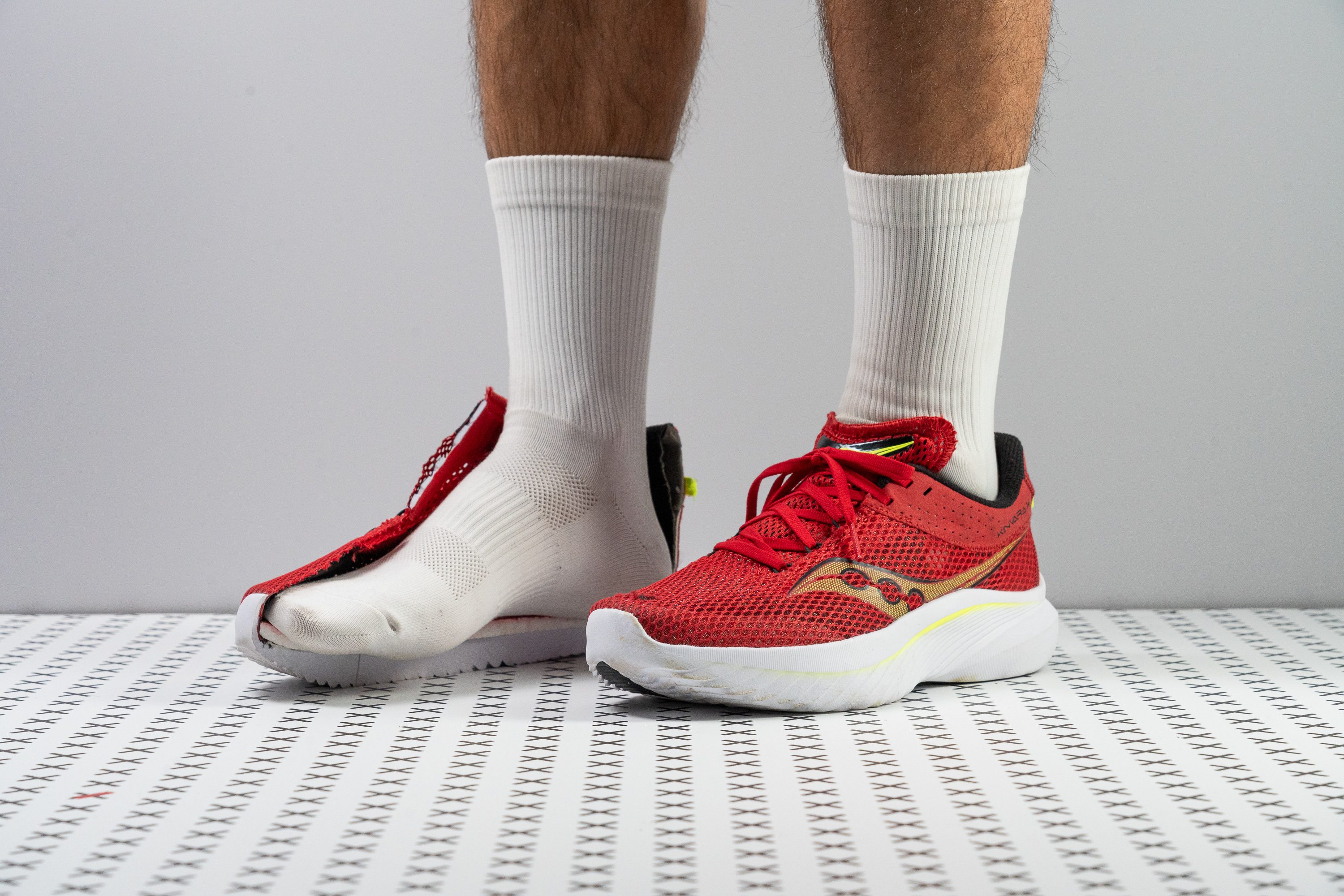Our verdict
- Top pick in best treadmill running shoes (2024)
- Top pick in best Saucony running shoes (2023)
Pros
- More cushioned and protective than ever
- The lightest Kinvara yet
- Offers some mild guidance
- Smooth, natural-feeling ride
- Pleasantly airy
- Works for fast and slow paces
- Fairly priced
- Works for fast and slow paces
- Can go the distance
- Also a worthy racing shoe
- Fairly priced
Cons
- A bit on the firm side
- Less outsole rubber means less mileage
- Lockdown is so-so
Audience verdict
Comparison
The most similar running shoes compared
+ + Add a shoe | |||||
|---|---|---|---|---|---|
| Audience score | 83 Good! | 87 Great! | 84 Good! | 84 Good! | |
| Price | £130 | £125 | £130 | £135 | |
| Pace | Tempo | CompetitionTempo | Daily runningTempo | Daily runningTempo | |
| Shock absorption | Moderate | - | Moderate | Moderate | |
| Energy return | Moderate | - | Moderate | Low | |
| Traction | Moderate | - | Moderate | High | |
| Arch support | Neutral | Neutral | Neutral | Neutral | |
| Weight lab Weight brand | 6.8 oz / 194g 6.8 oz / 194g | 7.9 oz / 224g 7.9 oz / 224g | 6.8 oz / 194g 6.7 oz / 190g | 7.7 oz / 217g 7.6 oz / 215g | |
| Lightweight | ✓ | ✓ | ✓ | ✓ | |
| Drop lab Drop brand | 4.1 mm 4.0 mm | 1.1 mm 0.0 mm | 4.4 mm 4.0 mm | 5.9 mm 5.0 mm | |
| Strike pattern | Mid/forefoot | Mid/forefoot | Mid/forefoot | Mid/forefoot | |
| Size | True to size | True to size | Slightly small | Half size small | |
| Midsole softness | Balanced | Balanced | Balanced | Soft | |
| Difference in midsole softness in cold | Small | Normal | Small | Small | |
| Toebox durability | Bad | Good | Bad | Bad | |
| Heel padding durability | - | Decent | Good | Good | |
| Outsole durability | - | Good | Good | Decent | |
| Breathability | Breathable | Breathable | Breathable | Breathable | |
| Width / fit | Medium | Wide | Medium | Wide | |
| Toebox width | Narrow | Wide | Medium | Wide | |
| Stiffness | Flexible | Moderate | Flexible | Moderate | |
| Torsional rigidity | Flexible | Flexible | Flexible | Stiff | |
| Heel counter stiffness | Moderate | Flexible | Flexible | Moderate | |
| Heel lab Heel brand | 30.3 mm 31.0 mm | 22.5 mm 24.0 mm | 27.9 mm 30.0 mm | 32.8 mm 34.5 mm | |
| Forefoot lab Forefoot brand | 26.2 mm 27.0 mm | 21.4 mm 24.0 mm | 23.5 mm 26.0 mm | 26.9 mm 29.5 mm | |
| Widths available | NormalWide | Normal | NormalWide | Normal | |
| Orthotic friendly | ✓ | ✓ | ✓ | ✓ | |
| Season | SummerAll seasons | SummerAll seasons | SummerAll seasons | SummerAll seasons | |
| Removable insole | ✓ | ✓ | ✓ | ✓ | |
| Ranking | #519 Bottom 21% | #151 Top 41% | #239 Bottom 35% | #241 Bottom 35% | |
| Popularity | #401 Bottom 39% | #248 Bottom 33% | #178 Top 48% | #132 Top 36% |
Cushioning
Shock absorption
We were surprised to find 121 SA of shock absorption in the Kinvara 14—almost hitting the lab average. Even more impressive, the forefoot climbs to 112 SA, which puts it above many rivals.
That’s likely due to the foam’s efficient dampening properties, which work well despite the thinner midsole compared to bulkier daily trainers.
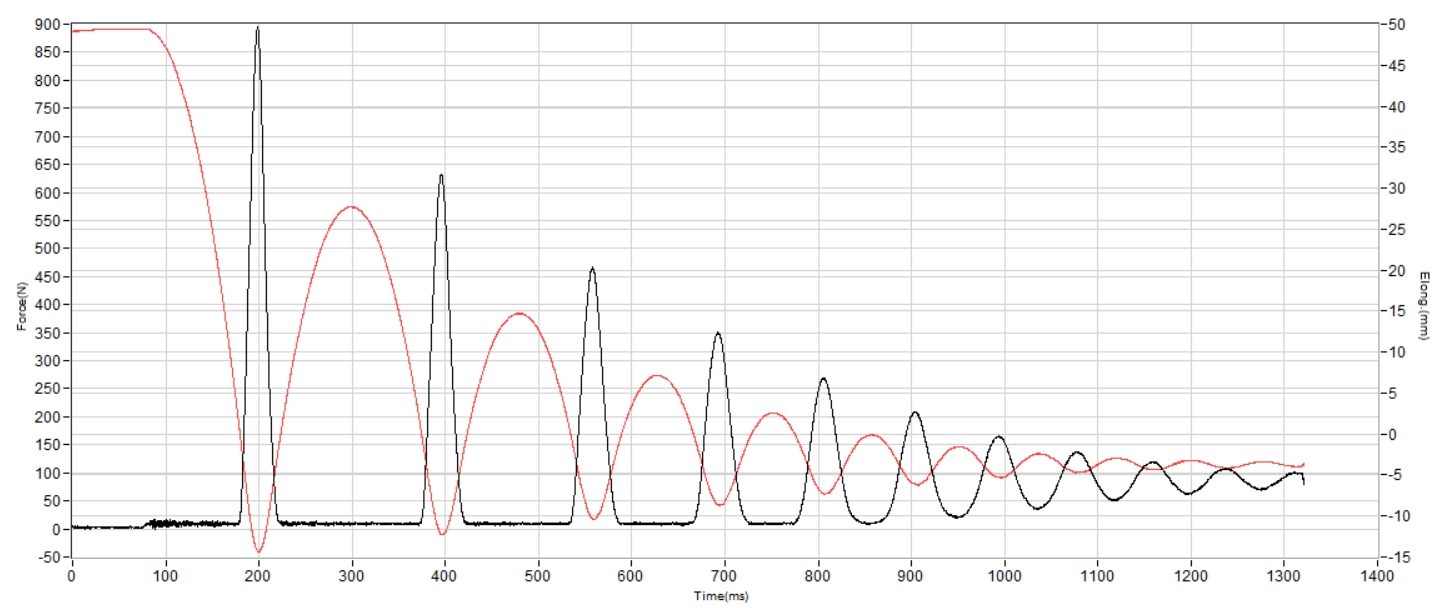
| Kinvara 14 | 121 SA |
| Average | 129 SA |
Energy return
The Kinvara gives a fast feel thanks to its low-to-the-ground design—not because it packs outstanding bounce. Energy return stays around average with 56.1% in the heel and 62.8% up front.
| Kinvara 14 | 56.1% |
| Average | 58.5% |
Size and fit
Size
Saucony Kinvara 14 fits true to size (74 votes).
Traction / Grip
Traction test
We measured a 0.40 score for the Saucony Kinvara 14—solid performance across all weather conditions. That’s quite impressive given how much exposed foam this outsole features compared to other running shoes.
| Kinvara 14 | 0.40 |
| Average | 0.48 |
Flexibility / Stiffness
This one mattered—flexibility has always been a fan-favorite feature of the Kinvara series. We tested it in the lab and confirmed it’s still alive and kicking with a super-flexible 9.0N score in our 30-degree bend test.
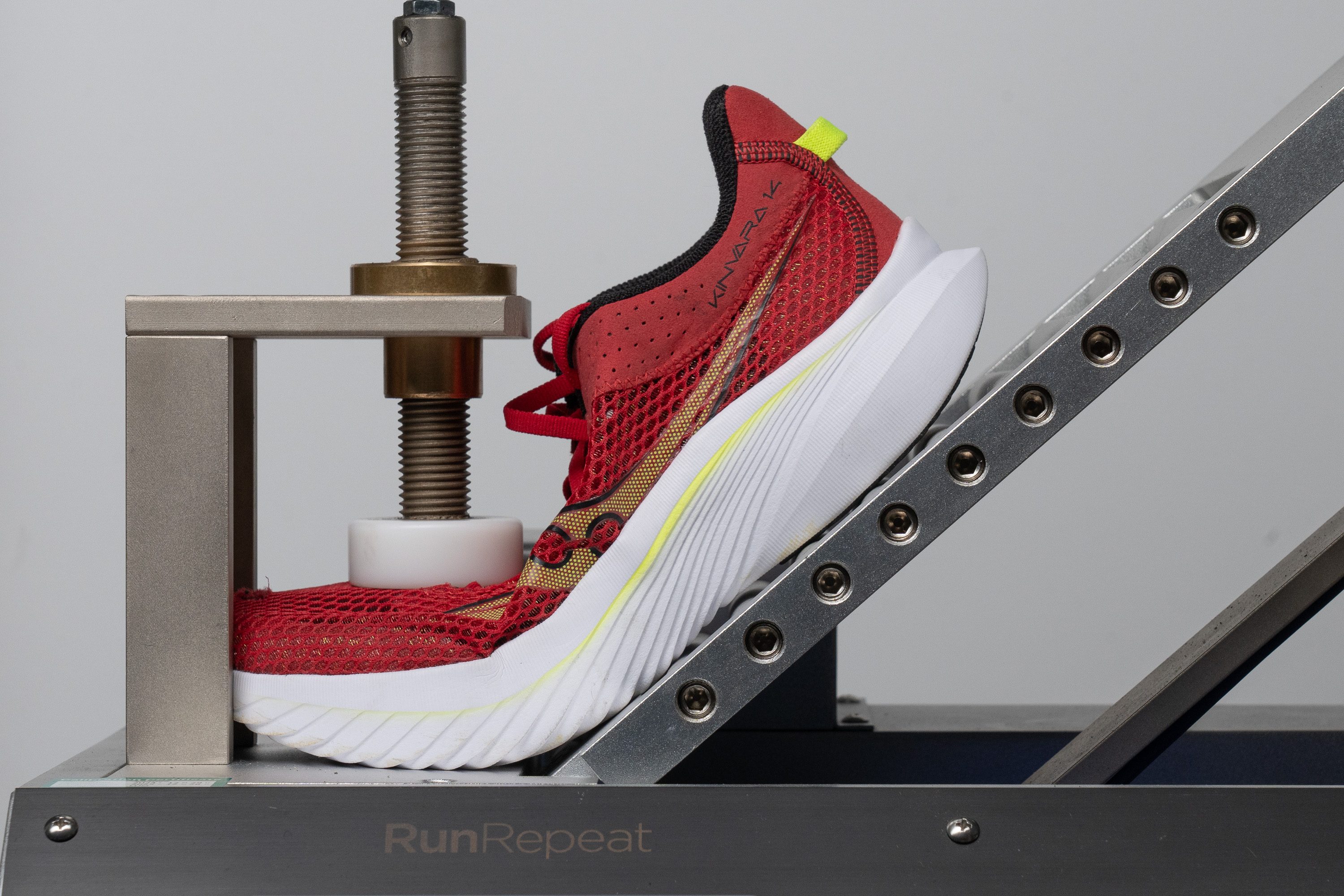
| Kinvara 14 | 9.0N |
| Average | 15.3N |
Who should buy the Kinvara 14
We recommend giving the Saucony Kinvara 14 a second, third, and fourth look if you:
- Want an agile speedster without the stiffness brought about by plates and shanks.
- Prefer a lightweight runner that has a soft and protective ride.
- Want an affordable daily trainer that can handle any distance at any pace.

Who should not buy it
Don’t be fooled, while the Kinvara 14’s cushioning looks pillowy, it’s actually quite firm. If a soft ride is what you’re after, we suggest checking out the New Balance FC Rebel v3. For a wider-fitting trainer/racer with a solid lockdown, have a look at the ASICS Noosa Tri 14, which we found to be accommodating.
What’s changed?
Comparing the Kinvara 14 to its predecessors, it’s unmistakable that this latest version underwent a complete overhaul.
These updates are what made the 14 a mid-cushioned shoe for this max-cushioned age:
- A beefier midsole made of a lighter blend of PWRRUN foam: it’s got 2.5mm more cushioning than the Kinvara 13, but maintains the signature 4-mm drop.
- A thick PWRRUN+ insole: this replaces the 13’s thin topsole layer, and adds a bit more soft comfort underfoot.
- More weight loss: the 14 is remarkably lighter than the previous version, despite the thicker stack.
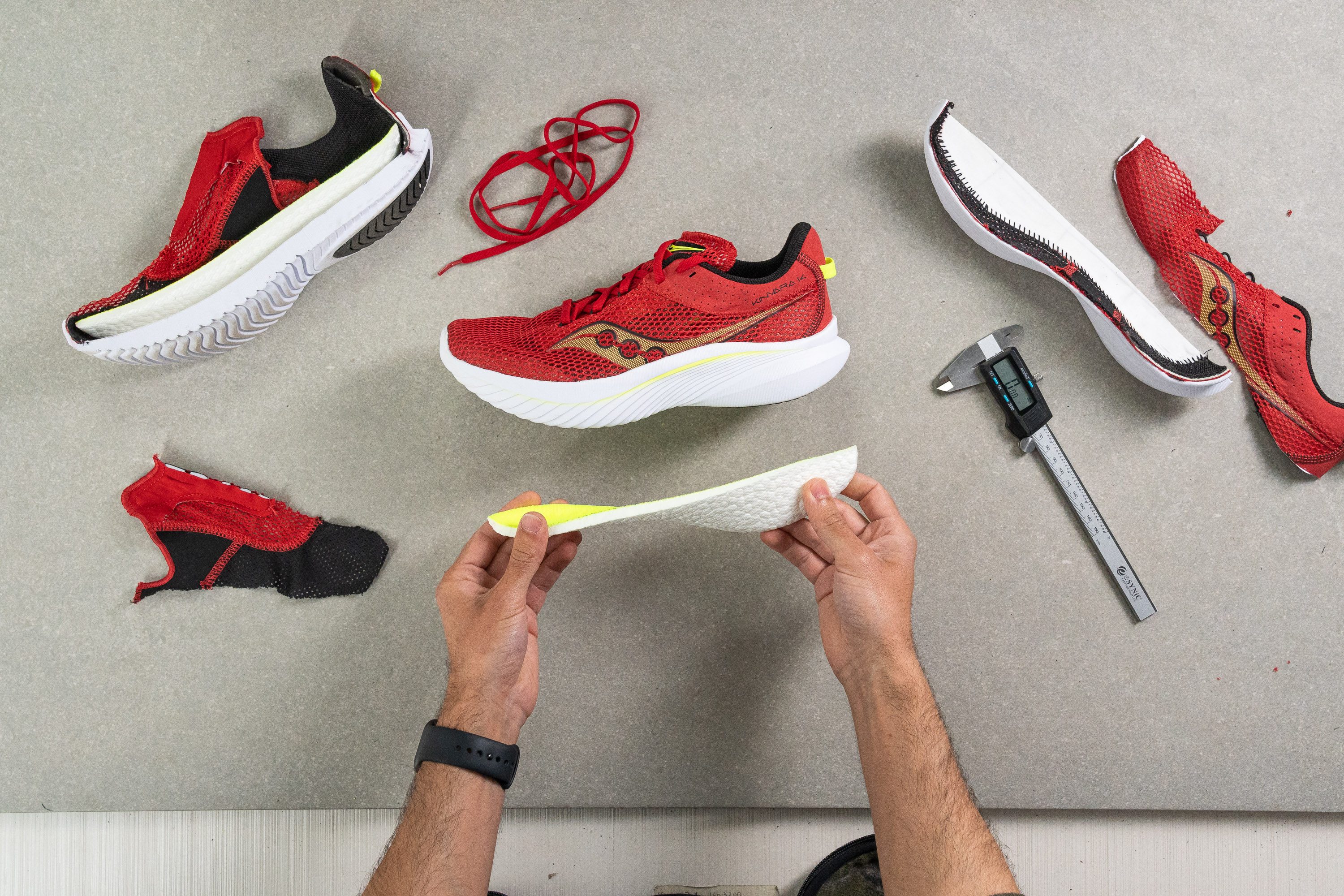
Minimalist, racing-shoe breathable upper
It seems the Kinvara 14 took a page from the Endorphin Pro 3’s upper. It uses the same light and breathable mesh that even has the same sparkly finish!
As expected due to its ultra-light upper, breathability is just fantastic. We awarded the Kinvara 14 the max score (5/5).
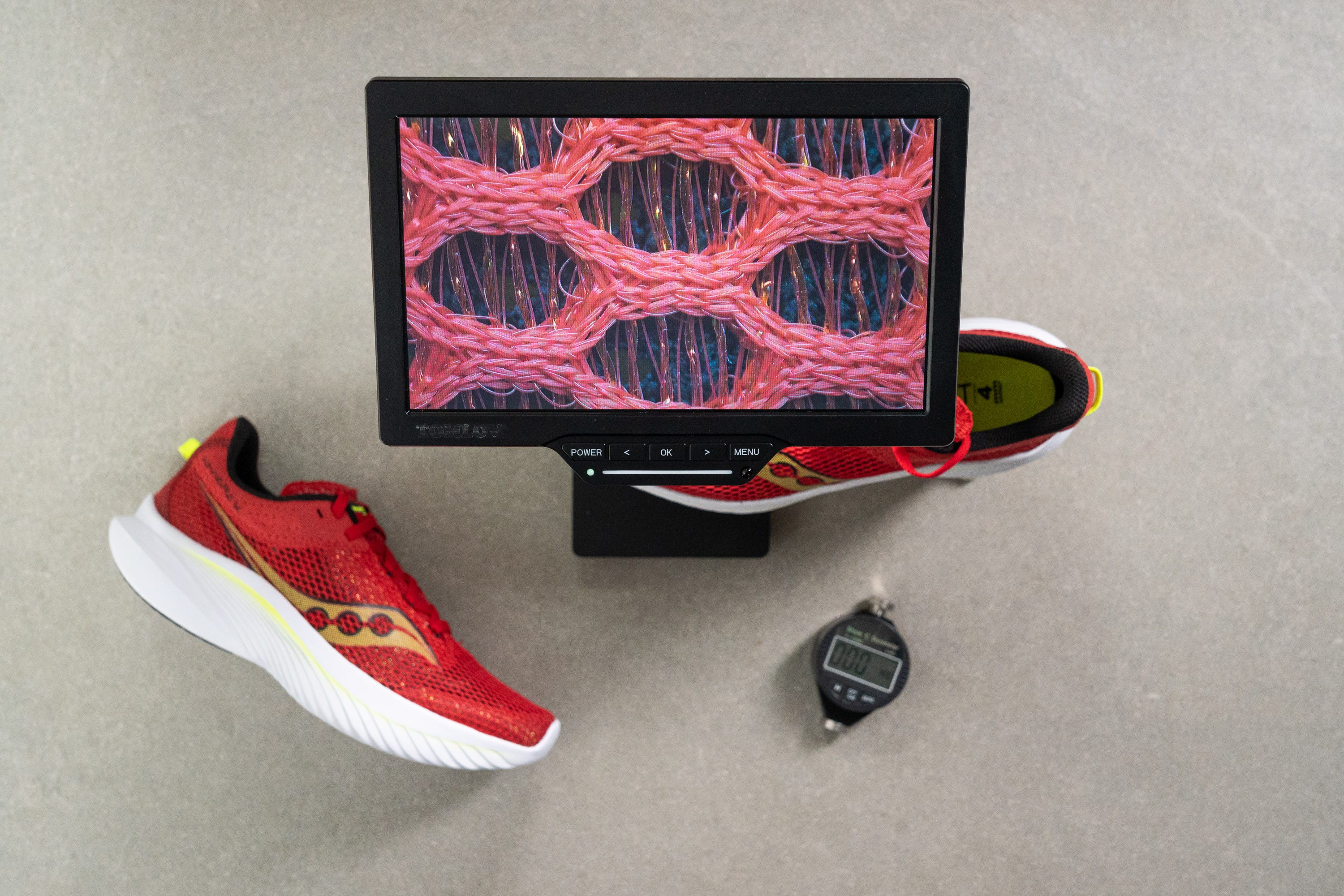
As evident in our eye-popping microscope images, the upper lacks significant structure and it's all about breathability, leading us to believe that durability may not be its strong suit.
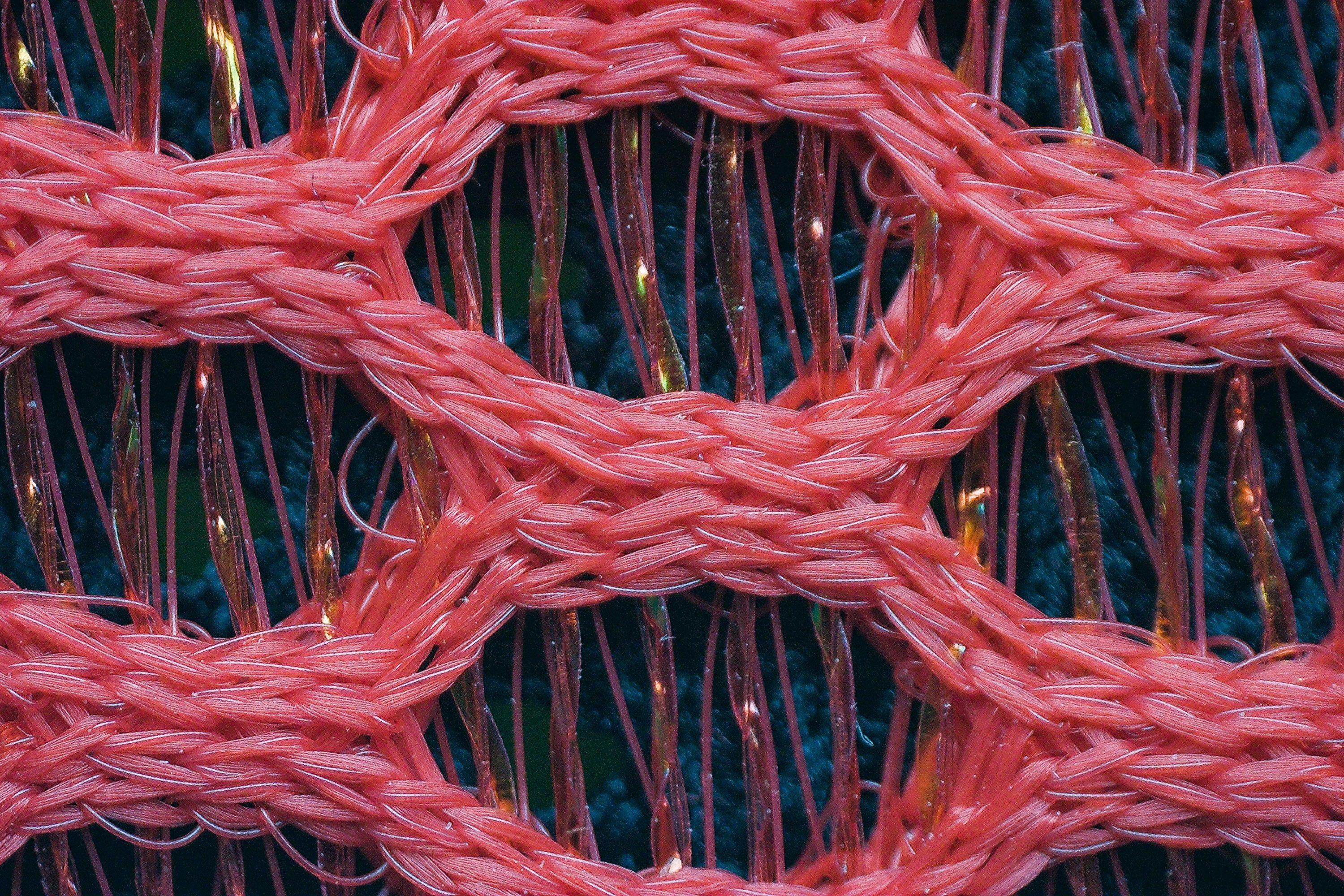
But unlike the EP3, lockdown in the shoe is not quite as race-ready.
The Kinvara 14 fit a bit loose around the midfoot, partly due to how pliable the upper material is. That's perfectly fine for us, as this is a training shoe and not something you wear for your main race.
After this examination, we were concerned that the durability of the upper might be very low.
Our signature Dremel test—which applies consistent force to each shoe for 4 seconds—verified our concerns. Those who often wear holes in certain shoes should be cautious with this one...
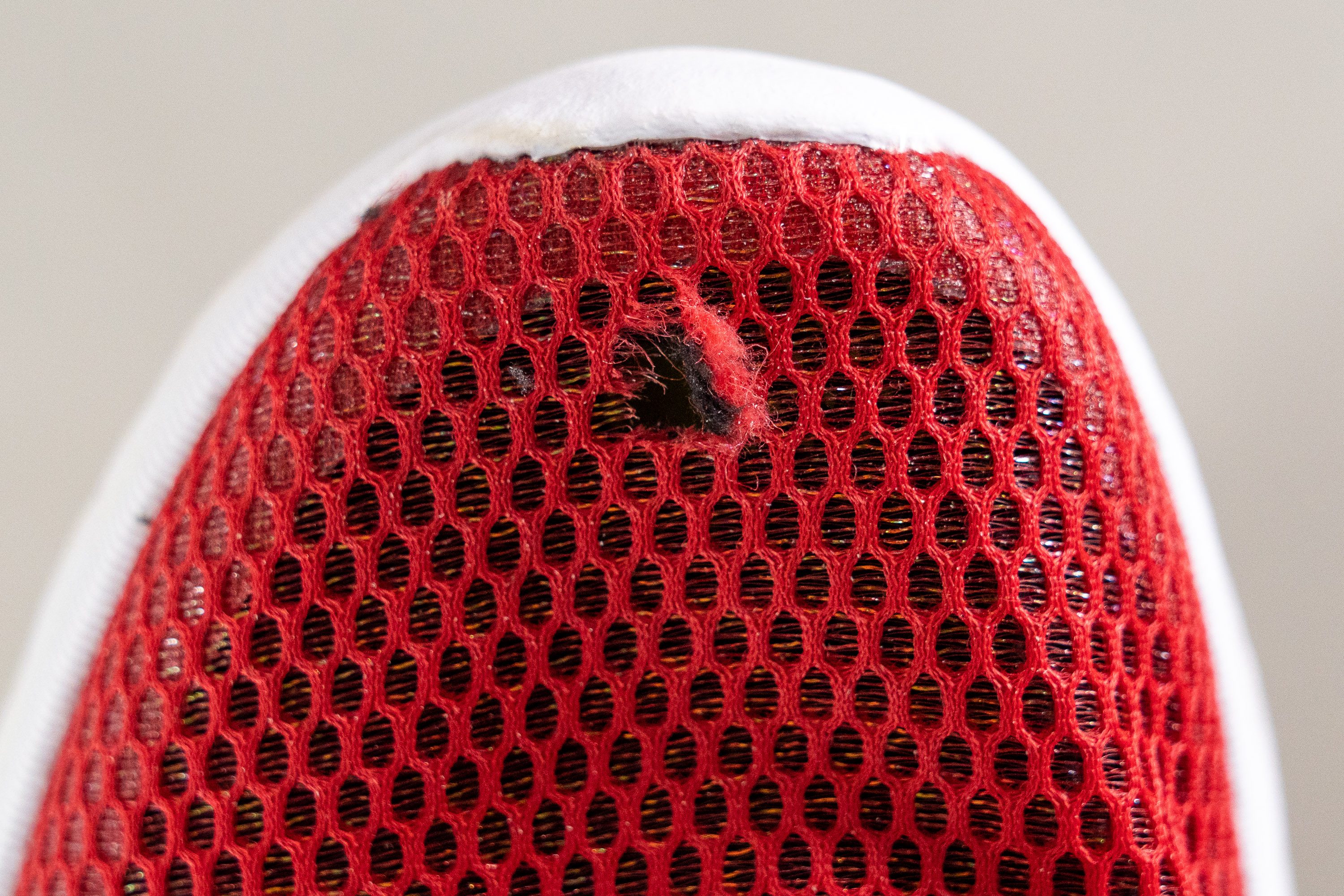
The Kinvara 14 is all bulk, no bloat
The Kinvara 14’s added midsole foam, combined with the new crazy-thick insole, gave it a cushier and more protective feel, while remaining as responsive as prior models. Kinvara enthusiasts won't be disappointed.
It’s still not a soft shoe but the PWRRUN+ footbed provides a little extra cush and a little extra spring as well.
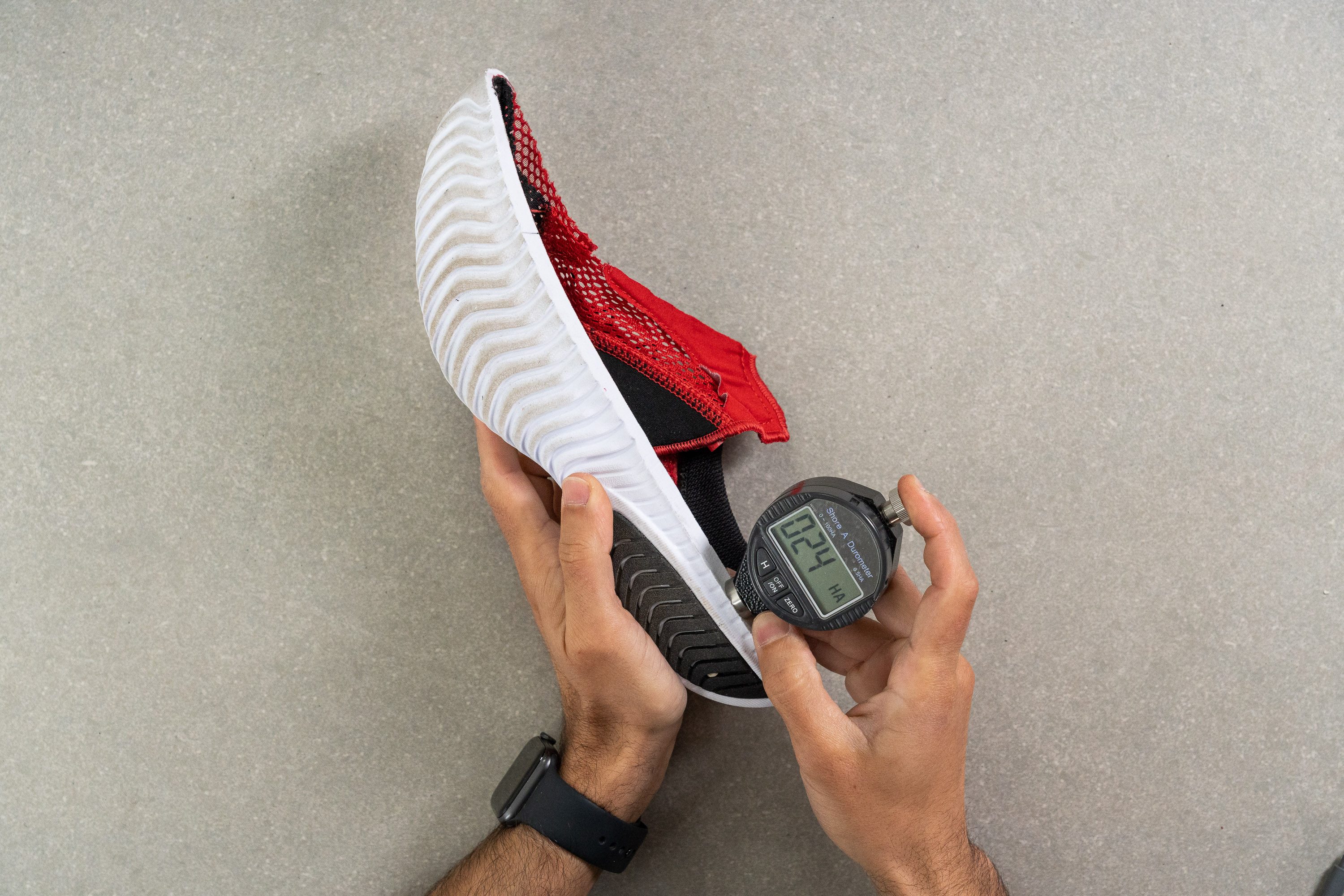
We measured the TPU foam of this Saucony shoe at 24.8 HA, which is 15.3% firmer than the previous Kinvara model. This confirms that it isn't a soft shoe. Take a look at the Nike Streakfly for that cloud-like feel.
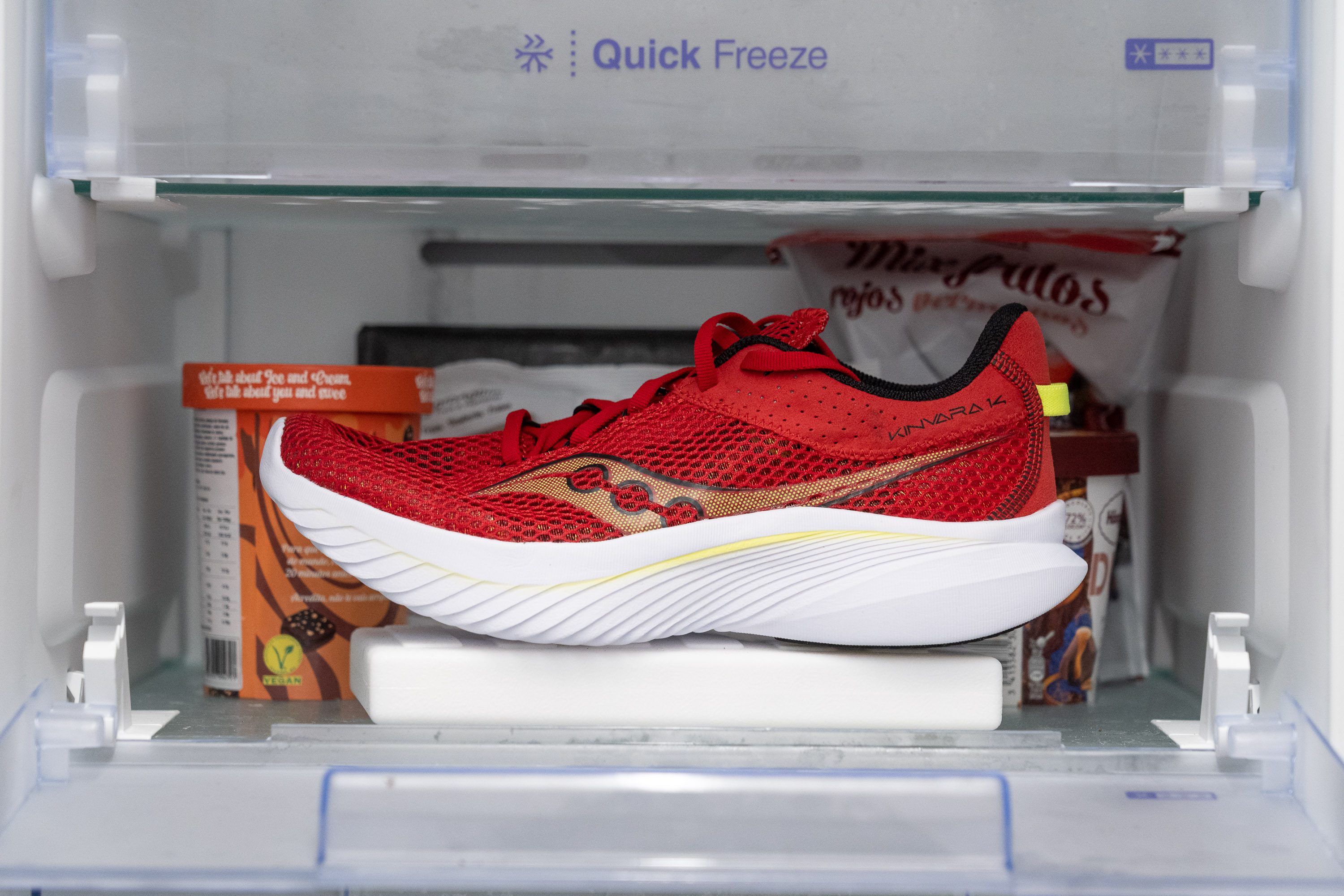
When exposed to freezing temperatures, this shoe's TPU-based foam retains its properties due to its ability to withstand cold conditions. The Kinvara 14 becomes only 6.1% firmer after 20 minutes in our freezer. In comparison, the Hoka Kawana's foam becomes 26.7% firmer, while the New Balance FuelCell Rebel v2 astonishingly hardens by 115.4%.
The Kinvara 14 can go as fast as you can take it
While the updates add a little extra pepper to the shoe's already fun ride, the traditional Kinvara DNA still shines through.
It’s light, agile, smooth, and natural—qualities that made it a marathoner’s weapon of choice before the dawn of super shoes. Those seeking this type of ride, where there’s no mechanical assistance from carbon plates and the feet have to do most of the work, will enjoy doing tempo work and racing in these shoes.
We only needed 15.3N of force to bend it to 90º. Here is some context:
- It's 117% less than the average shoe.
- Out of the 180+ shoes we've analysed in our lab, only 7 required less force than this one.
So yes, the flexibility of this shoe is truly out-of-this-world.
In our manual evaluation, we verified that this Kinvara is again one of the most flexible shoes on the market. Due to its minimal rubber and structure, this shoe scored a 1 out of 5 in both longitudinal and torsional flexibility tests—being 5 the stiffest.
It's important to note that the Kinvara 14 becomes 86.9% stiffer after our freezer test, making it feel firmer than usual during winter.
Just a tiny bit stable
There’s also a touch of medial side guidance in this neutral trainer it’s very toned-down and feels more like the stability on the Tempus rather than the Guide.
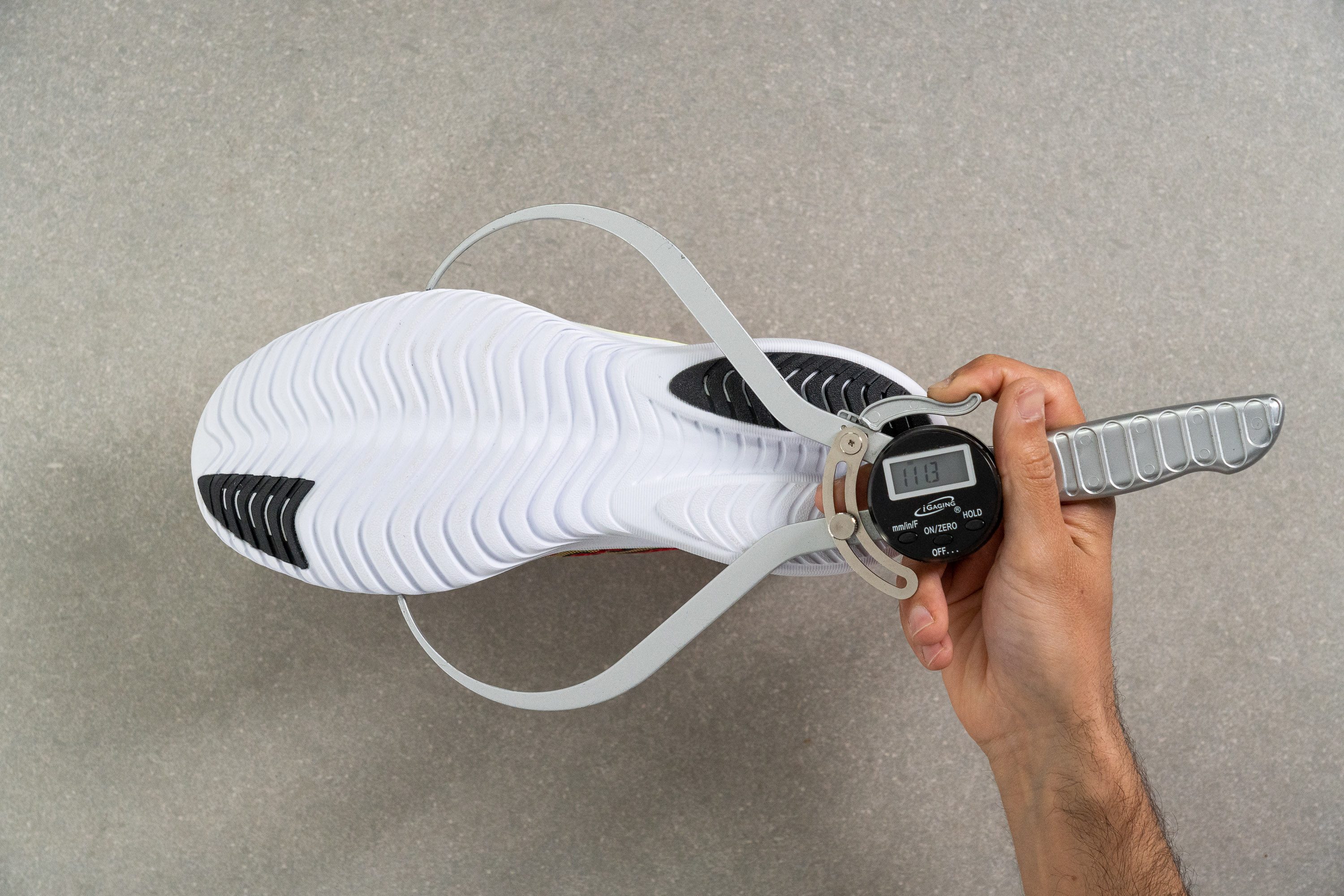
Once more, Saucony has upheld the Kinvara legacy by maintaining a relatively narrow platform. With a 111.3mm forefoot and an 87.5mm heel platform, this shoe it's narrower than the average shoe (112.5 mm / 89.7 mm), particularly in the heel area. This is a shoe better suited for midfoot-to-forefoot strikers.
Fortunately, we still have the signature 4 mm low-drop of this saga. That creates a more stable ride despite the narrow platform.
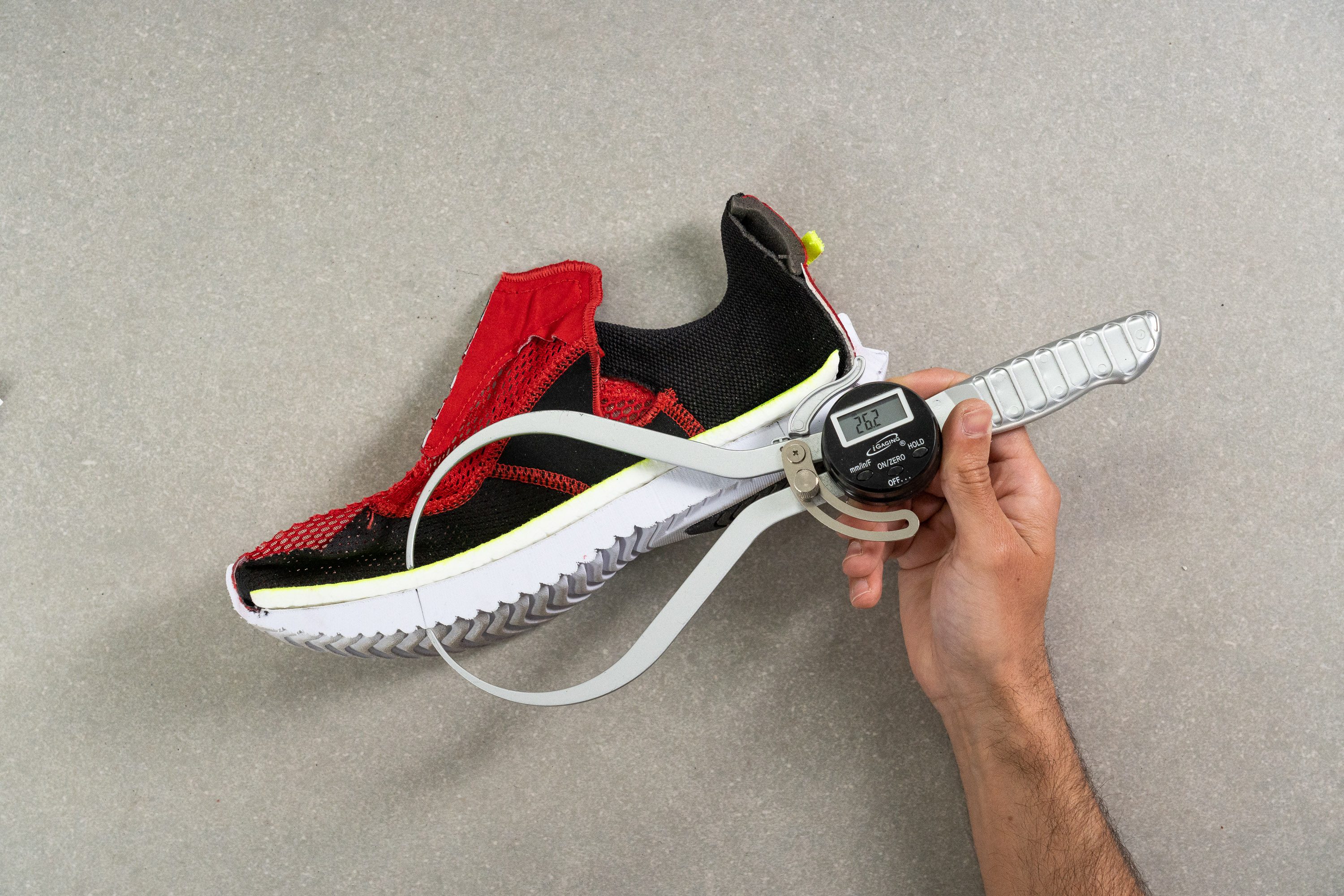
You simply can't rely on official drop numbers—that's the unfortunate reality in the world of running shoes. We've observed discrepancies of over 100% between a brand's official claim and our accurate measurements. However, Saucony delivered. The Kinvara's advertised 4 mm drop was measured by us at 4.1 mm, which is quite impressive!

To make up for the lack of structure, the American brand opted for a moderately hard heel counter. We measured it as a 3 out of 5, slightly above the median result, which helps prevent heel slippage effectively.
Barefaced outsole
The Kinvara 14’s outsole is mostly exposed PWRRUN midsole foam, with only two sections—the lateral-side heel and the medial-side toe box—covered by rubber. And, in an attempt to reduce weight, the rubber incorporated is not particularly thick, being 41% thinner than the average thickness found in other shoes.
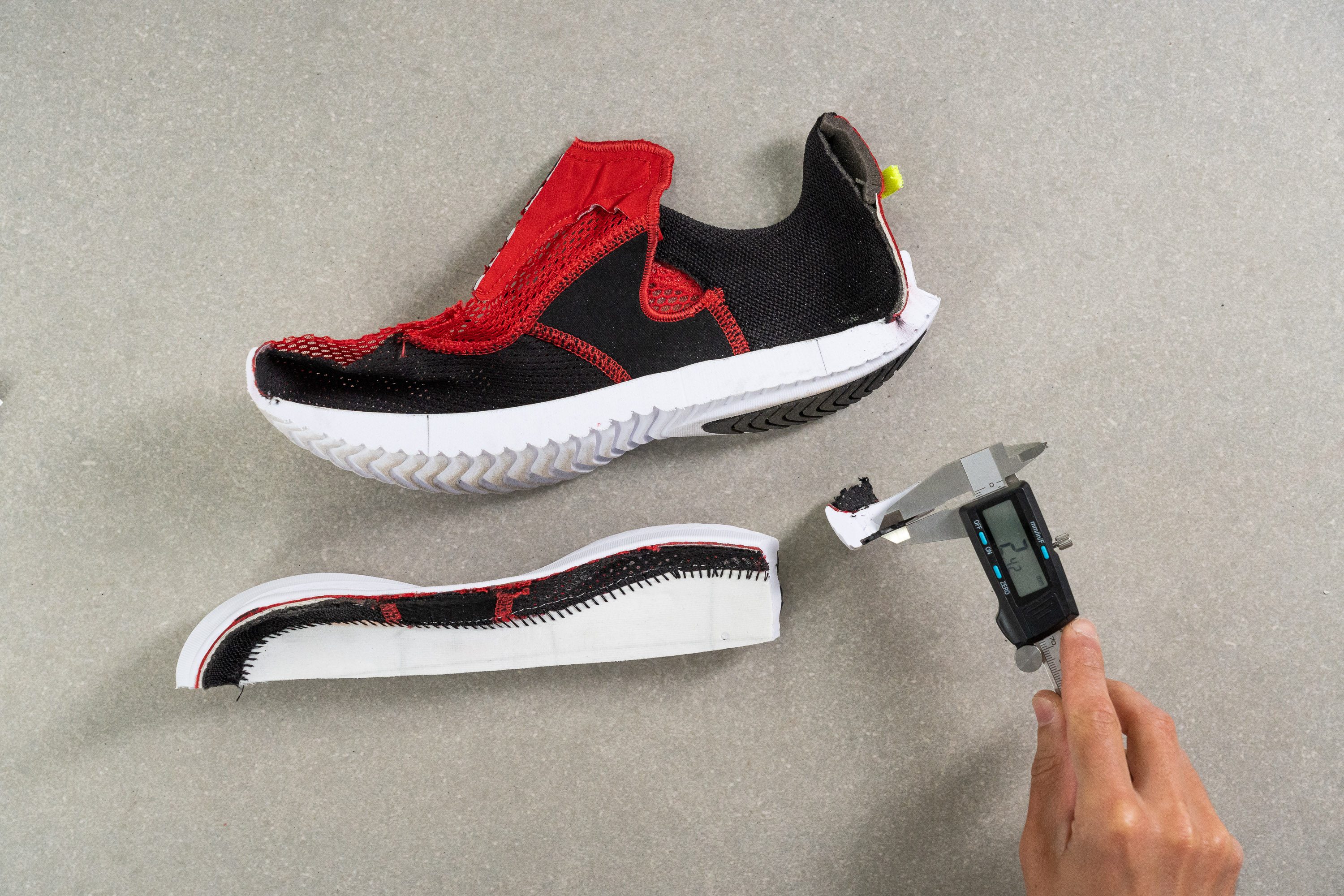
Although this Saucony model doesn't have a durable and thick rubber, its mileage will surpass that of previous Kinvaras. The rubber in this version is 16.6% thicker than in the v13 and 37.5% thicker than in the v12, marking a positive step forward.
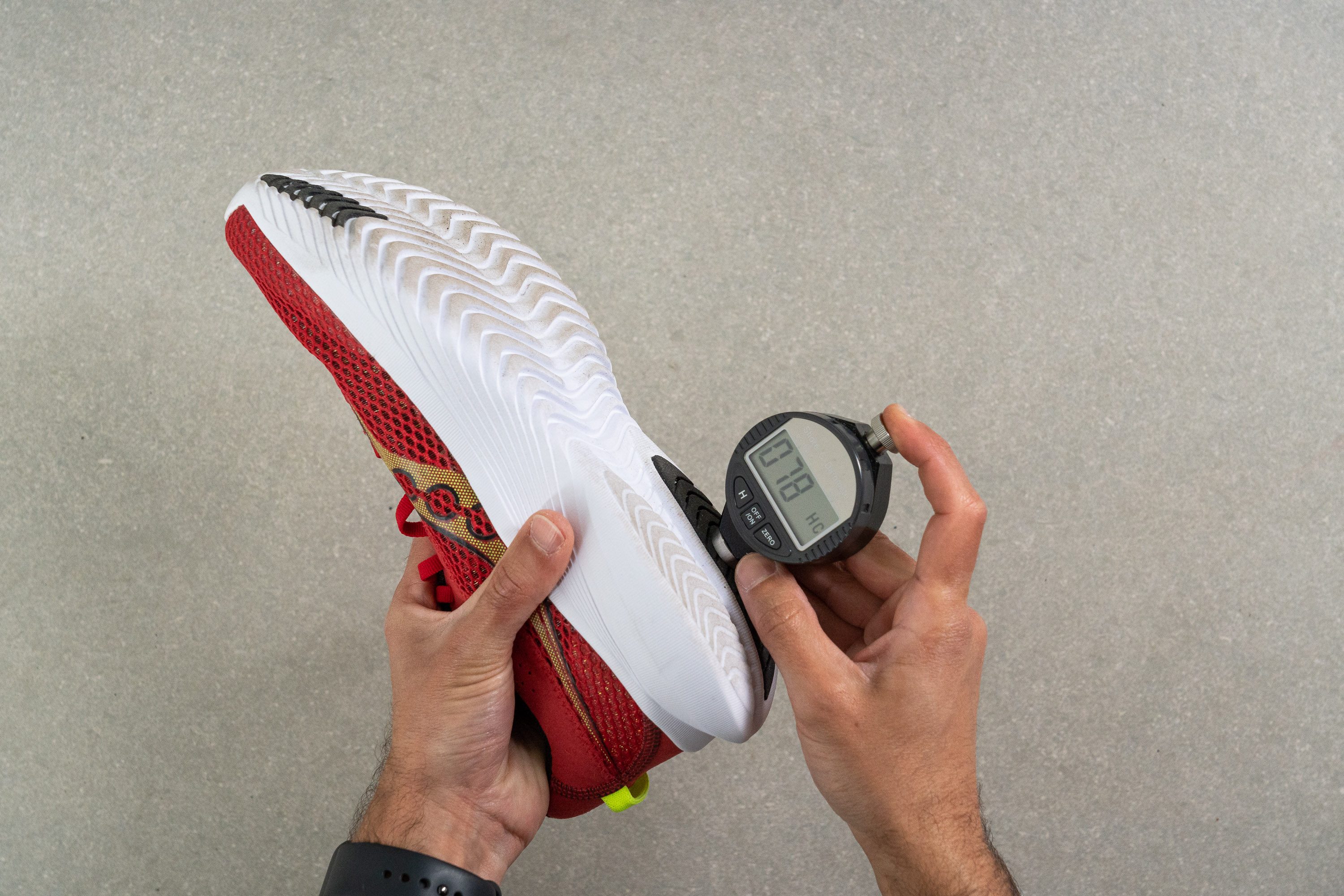
Despite the rubber scarcity, it still has a good grip on wet and dry surfaces because of the ribbed tread pattern at the bottom of the midsole. To accomplish this, Saucony chose a pretty standard rubber compound, which we measured at 79.4 HC, nearly the same hardness as the average shoe (79.8 HC).
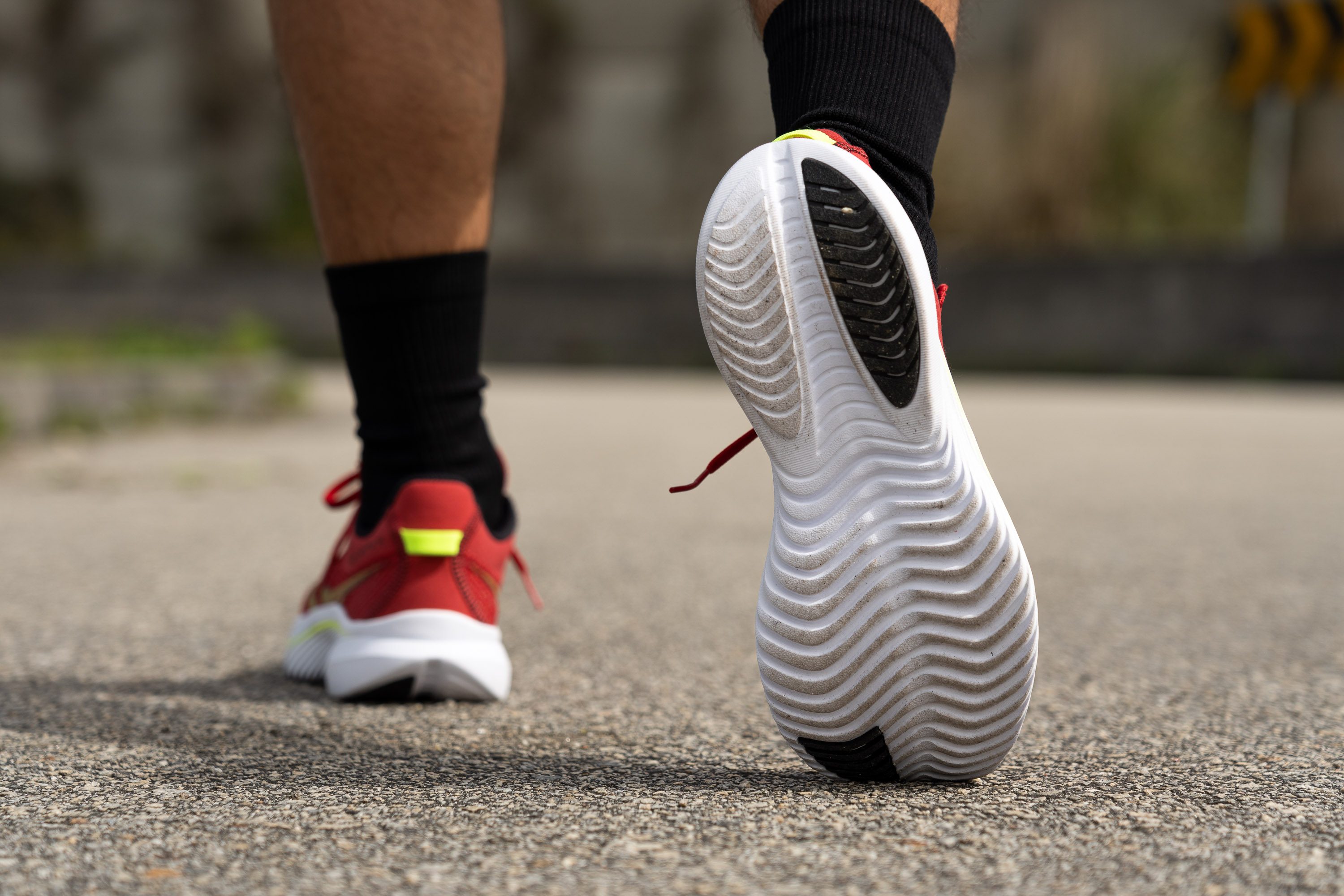
However, we still think that the shoe's exposed foam won’t last as long as a proper rubber outsole.
Wider than before and true to size
While there is some of that aforementioned extra volume in the midfoot, the Kinvara 14 is generally a snug-fitting shoe that’s more suited to narrow feet. With that said, the upper has more real estate than ever.
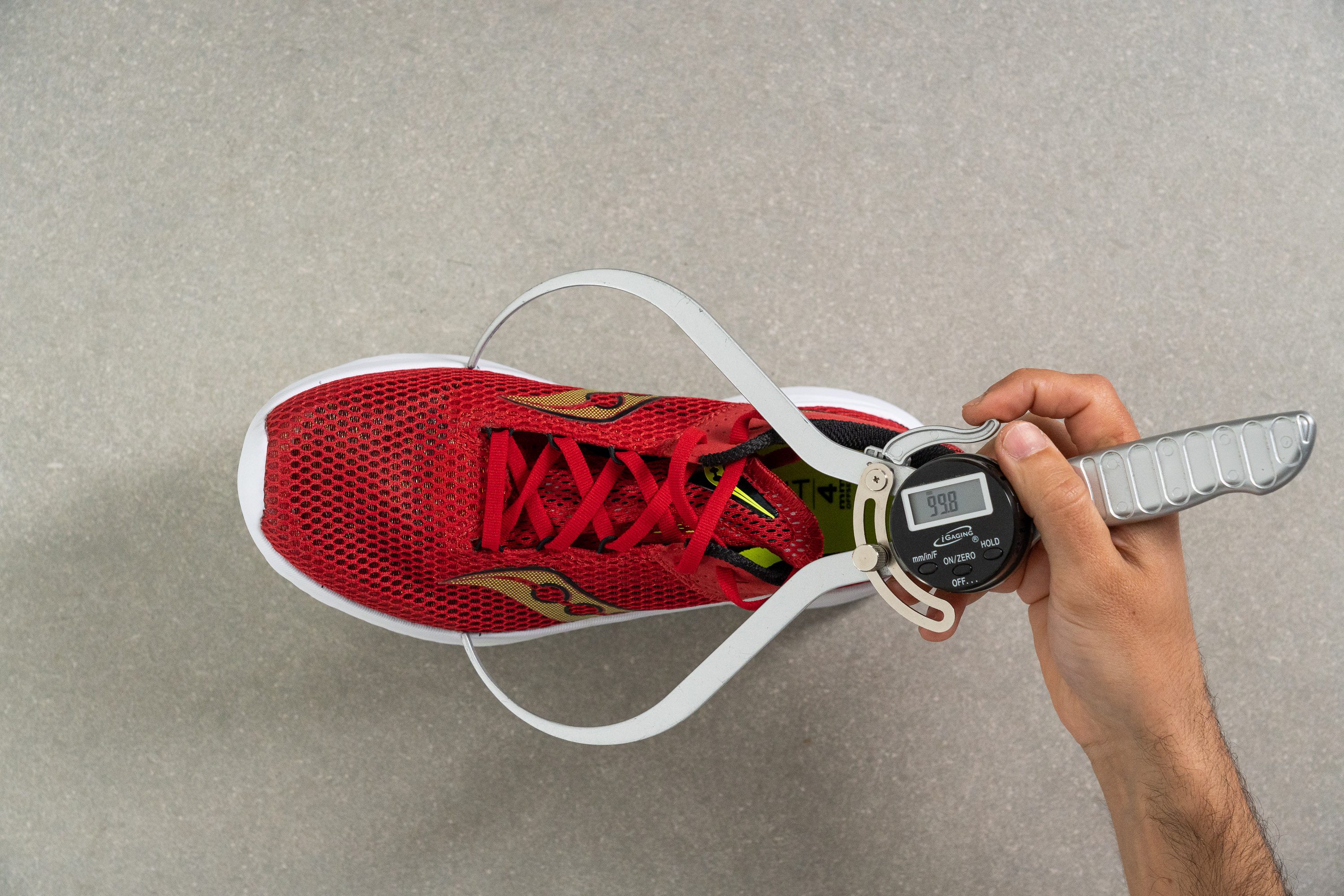
We can confirm that Saucony is making the Kinvara wider than ever, while still offering wide sizes as an option. The upper of the Kinvara 14 is 4.1% wider than the v13 and 1.3% wider than v12. To compare it with a similar shoe, the Nike Pegasus Turbo Next Nature is 4.8% narrower!
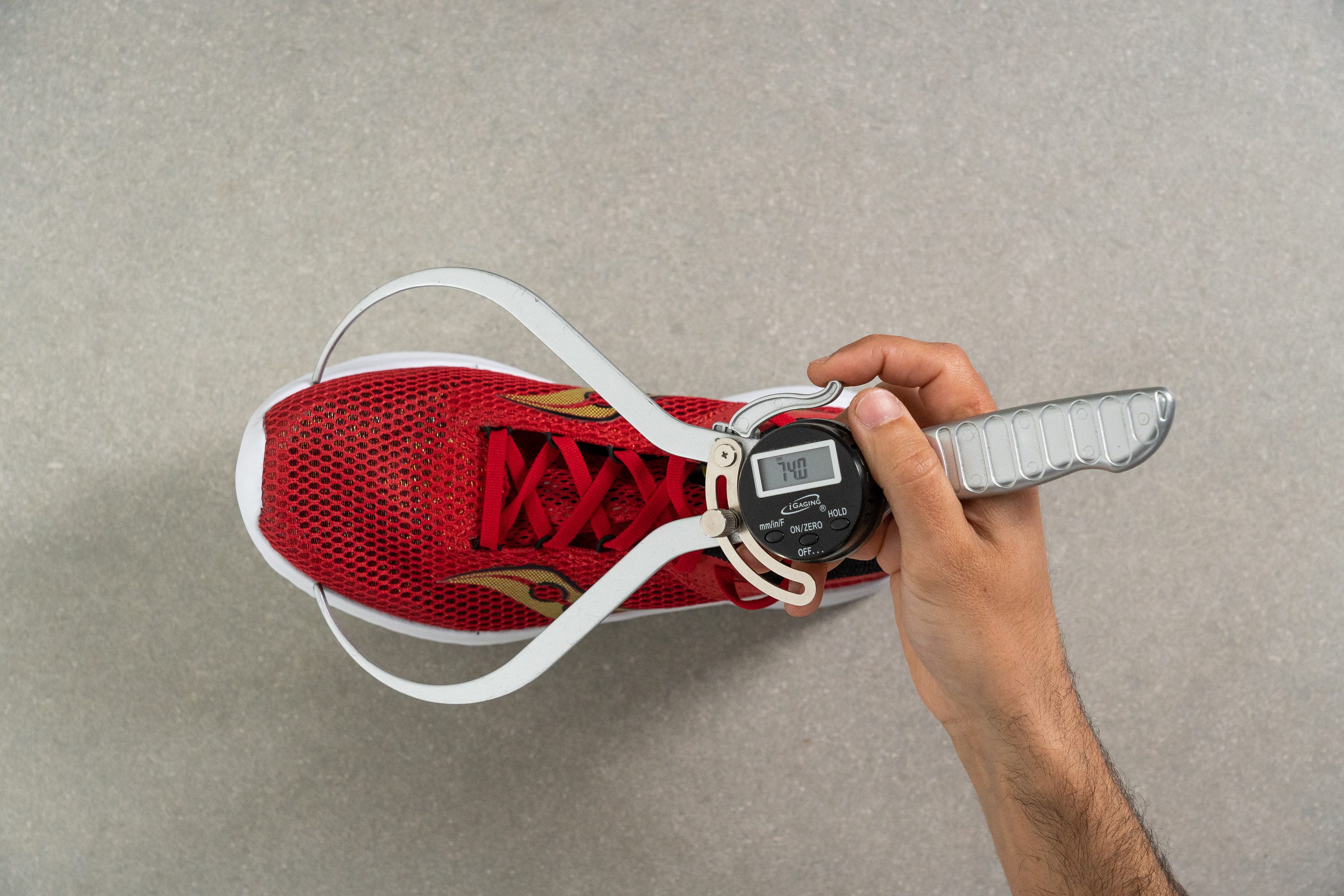
It's not just at our main measuring point—the widest part of the upper—but also in the big toe area where the Kinvara 14 is roomier. We measured it at 74.0mm, which is wider than the average shoe measurement of 73.1mm.
No longer just for short hauls
The 14’s updates have made it an even more versatile Kinvara. Thanks to the added cushioning, this new edition can now take on longer distances. We were even able to handle the classic Sunday long run in it!
We agree, and we also confirmed those natural and unassisted running sensations, thanks to the lack of rockered geometry—just what a Kinvara enthusiast expects.
The words that best describe the shoe's ride are smooth, natural, and lightweight. Interestingly, it also felt stable!
While primarily a tempo trainer, its mild stability also allows the shoe to handle easy and steady-paced runs equally well. The semi-gusseted tongue provides security both in easy and fast runs.
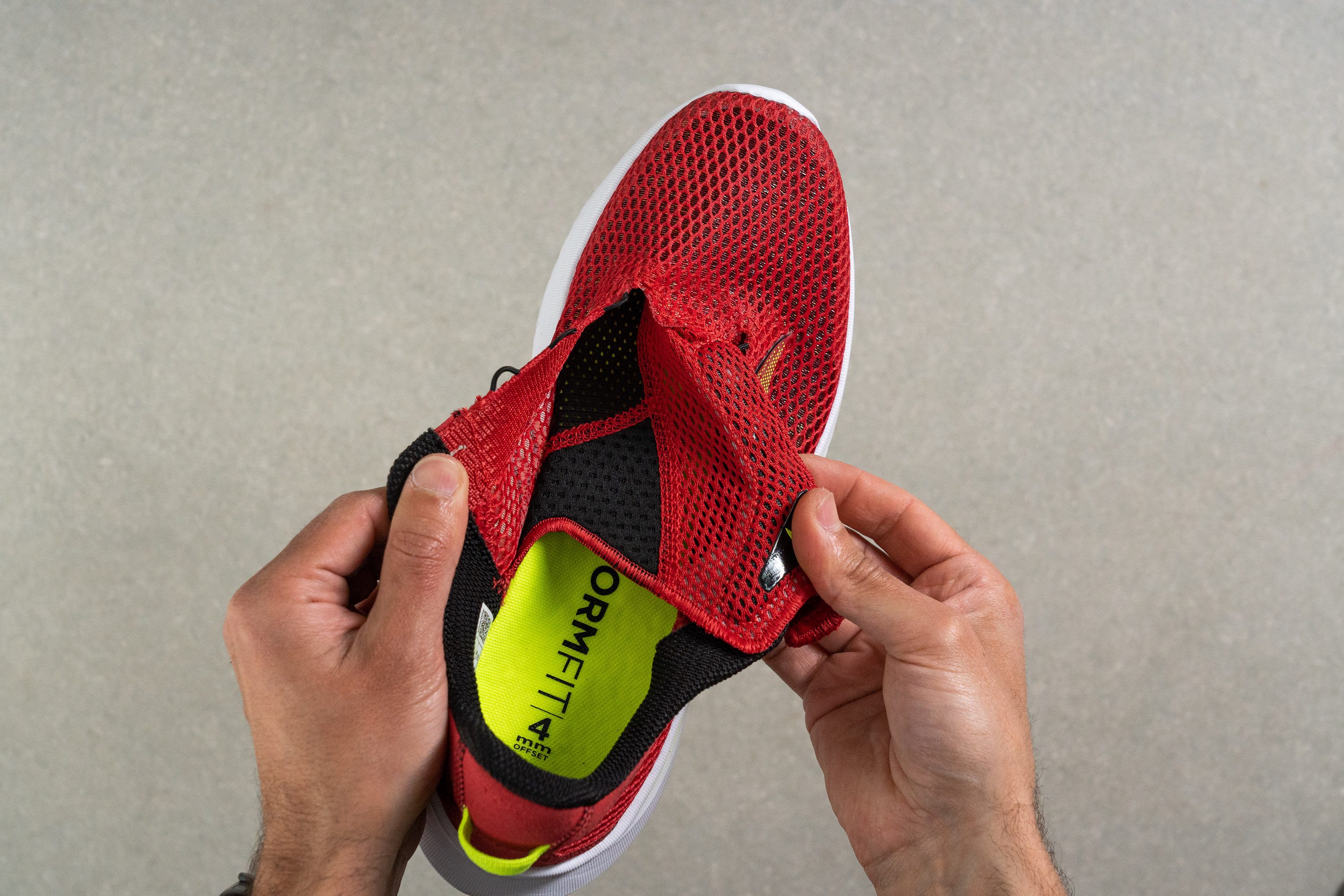
Super-thick insole and a convenient pull tab
One of the most significant transformations in the latest Kinvara model is the insole. In a clever effort to enhance foot cushioning without resorting to an overly soft midsole—which would disappoint Kinvara enthusiasts in terms of stability—Saucony opted for an incredibly thick and comfy insole.

We measured the Kinvara 14's insole at 7.0 mm, which is an impressive 85% thicker than the Kinvara 13 and a breath-taking 89% thicker than the Kinvara 12. Wow!
We also appreciated the finger loop pull tab. It makes slipping into the shoe easier and it just looks fantastic.
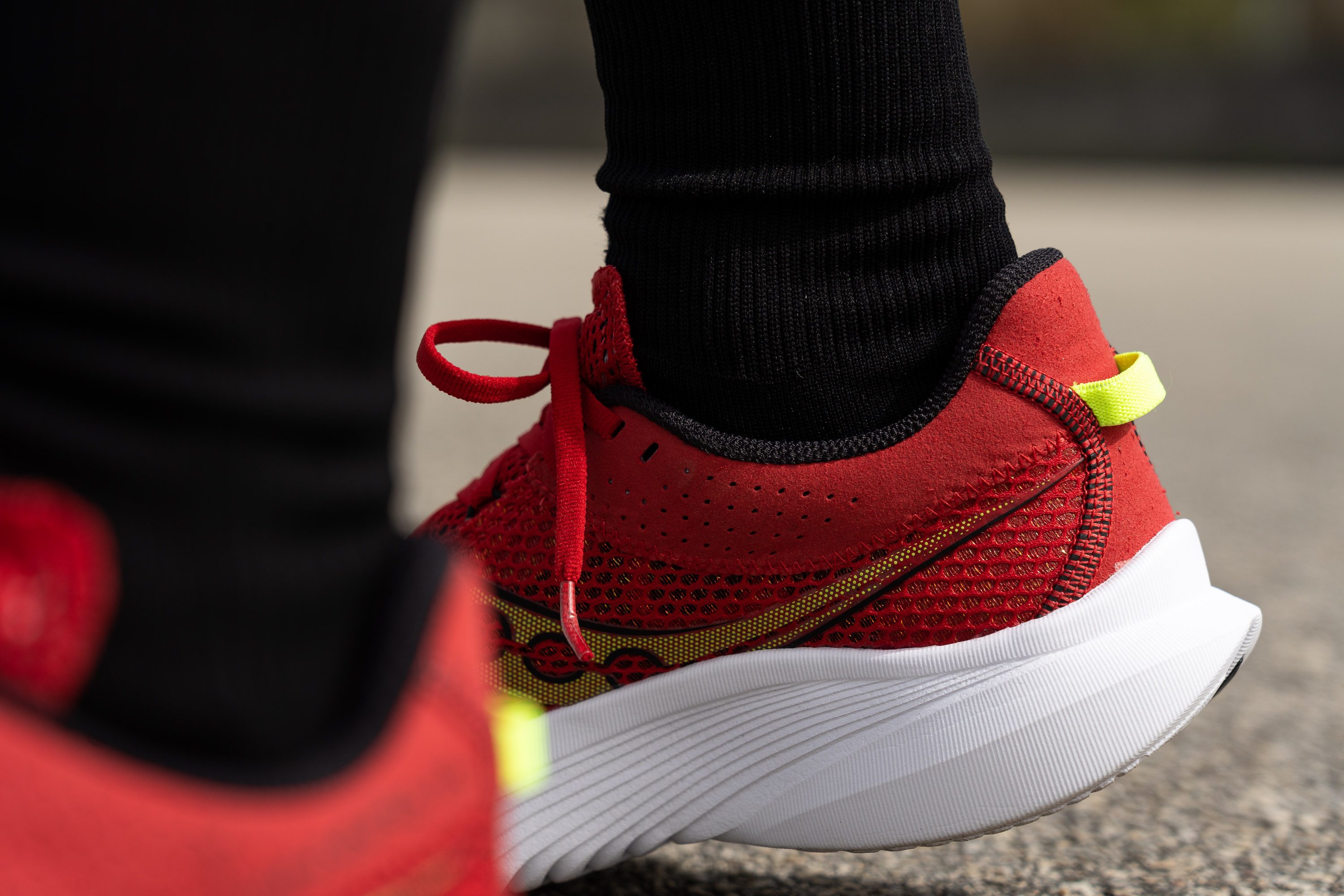
Fantastic price point
At £120, the Saucony Kinvara 14 is one of the more affordable speedwork options out there. For comparison, the average price of tempo running shoes is £160.


